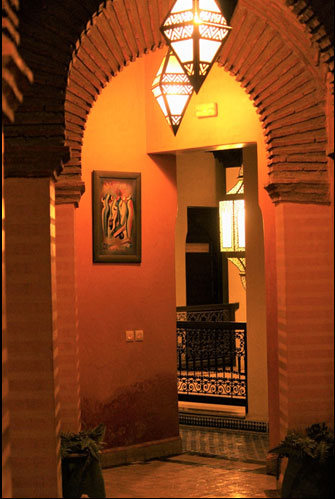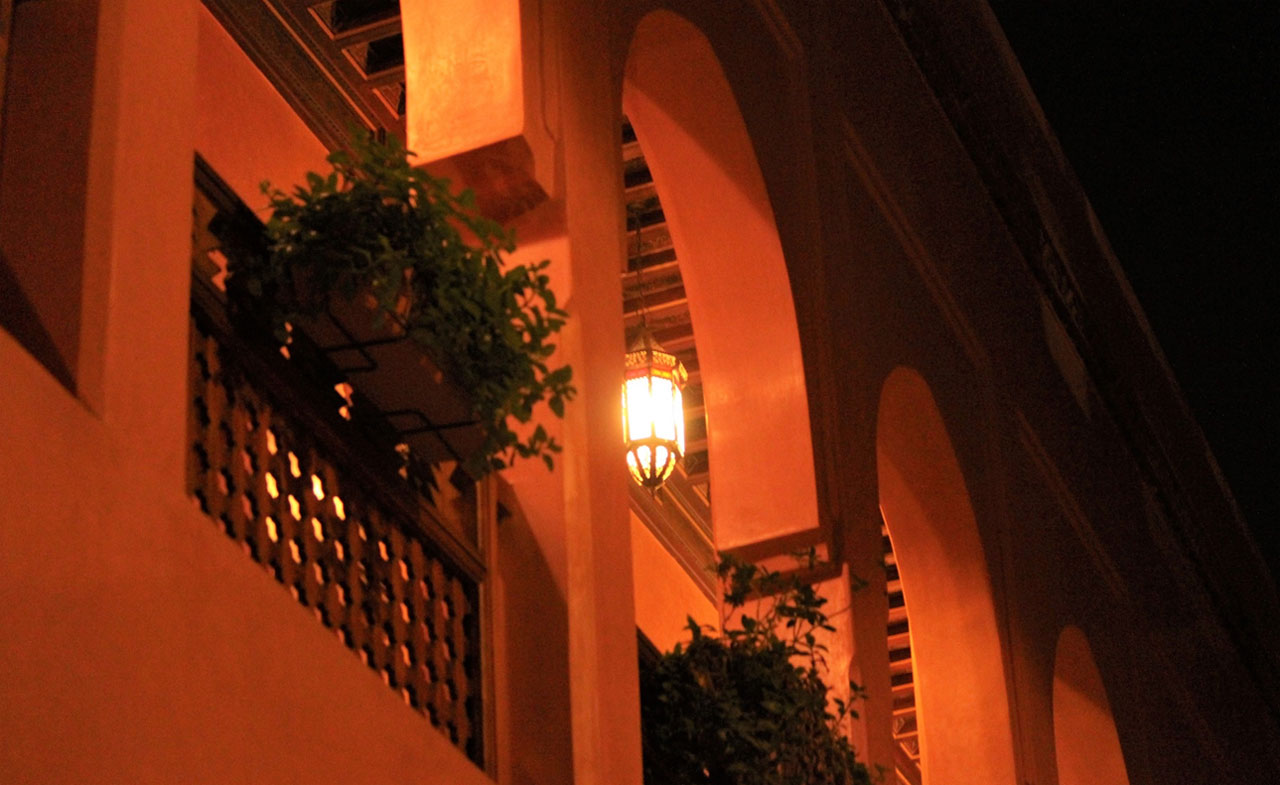ARCHITECTURE - THE INHERENT
STIMULATOR OF THE SENSES
Author: Roksana Chehna
 The culture and civilizations of the world have always communicated the essence of their heritage through a medium of art, primarily architecture. The urban landscape, modest housing, palaces, and places of worship told a story, expressed sentiments and even today, after all these years, elicit an emotional response from the traveller and the historian alike. Step into the architectural nostalgia of the palaces and from the construction their stories continue eloquently through the language of light, patterns and art. Reminiscent of a period and a lifestyle, the natural and artificial lighting illuminates the wood engraved furniture and carpets woven by the local craftsmen. The play of openings through jaalis addressed a cultural requirement for women confined behind screens. Through a visual play of patterns and light, it reiterated a cultural necessity within the architectural space for generations to come. The vernacular artists of the world’s civilizations, not only provoked the senses with their pragmatic use of colour, texture, geometries and volume, but also, solemnized a culture through the art of architecture.
The culture and civilizations of the world have always communicated the essence of their heritage through a medium of art, primarily architecture. The urban landscape, modest housing, palaces, and places of worship told a story, expressed sentiments and even today, after all these years, elicit an emotional response from the traveller and the historian alike. Step into the architectural nostalgia of the palaces and from the construction their stories continue eloquently through the language of light, patterns and art. Reminiscent of a period and a lifestyle, the natural and artificial lighting illuminates the wood engraved furniture and carpets woven by the local craftsmen. The play of openings through jaalis addressed a cultural requirement for women confined behind screens. Through a visual play of patterns and light, it reiterated a cultural necessity within the architectural space for generations to come. The vernacular artists of the world’s civilizations, not only provoked the senses with their pragmatic use of colour, texture, geometries and volume, but also, solemnized a culture through the art of architecture.
The Lucas Museum of Narrative Art drove the point home by quoting, “Narrative Art tells a story. It uses the power of the visual image to ignite imaginations, evoke emotions and capture universal cultural truths and aspirations. What distinguishes Narrative Art from other genres is its ability to narrate a story across diverse cultures, preserving it for future generations.” Isn’t this architecture for the senses after all? A narrative art that stimulates the human senses with a gratifying energy that encourages productivity in our days. Architecture is a mere extension of art, a cumulative expression of thoughts, intuitions, and emotions. It’s the extension of a personality and their association with the world. We approach the site devoid of preconceptions, first taking in what the tangible location or the blank canvas of an empty space gives us. Then with a dire understanding of cause and effect, the spatial organization of cultures and memories can bring sense to what otherwise maybe deemed irrelevant. Like a modern adaptation of a Shakespearean play can evoke an emotional response, the traditional lines of architecture can be reconsidered with the only function being to create an experience for the senses.

"Like a modern adaptation of a Shakespearean play can evoke an emotional response, the traditional lines of architecture can be reconsidered with the only function being to create an experience for the senses."
The turn of the century had architecture maestros like Legoretta, who reminded us that there is nothing more magnificent and enduring than simplicity. The enormity of their vision echoes through a geometrical labyrinth that punctuates the sky with a determined volume. Following the footsteps of the greats, we too can do so much more while taking cues from our heritage and validating it in today’s global confluence of cultures. There is an inextricable link between the architecture envisioned and the tangible site. Just like the link between the practical function and the aesthetic form. The art of architecture relates to the senses with a design that seamlessly blends with its surroundings. It universally follows the Gestalt design principle that “the whole is other than the sum of its parts”. When the landscape only relates to the design of a garden without addressing the architecture, it misses out on a poetry of emotions. Like second skin, the architecture, interiors and landscape need to be seamlessly integrated with the inhabitant’s personalities.
CONCLUSION
When building the home of your dreams, remember how you felt while taking in the sights of green valley against the amber light. Remember how you felt lying down along a beach with nothing but the expanse of the ocean. Remember the moment of relaxation, humility and inner peace that consumed you whilst being one with the elements of nature. Well, that’s what designing for our senses is all about. We spend most of our time within the length and breadth of a space, elated or exhausted. Whether it is for the superwoman juggling the various acts society expects or working those long hours focused on a desk, we need to make the moments count within a space. The subtle unity of light and colour is sacrosanct in lifting the human spirit with its warmth. Let every room have clear windows that always reveal the indoors to the sights, sounds and fragrances of the peaceful panorama. The constant of a water cascade and the ruffling of leaves beckons us to rejuvenate. An effusion of art and art and artefacts that communicate the identities of the residents, evolve in a space that has an identity of its own too. Just the way landscape is integrated into the architecture, the furniture and art need to be choreographed into the design of the interiors, giving each element the unique identity it deserves. The interdependence of the five elements of light, colour, water, plants and art paves way for a design that produces a kaleidoscope of effects that rejuvenate the mind, body and soul.


